“There just aren’t enough hours in the day.”
If you’ve ever said this, you need one thing: Automation!
(And maybe to hire employees or say “no” more often, but those are conversations for another article.)
Ecommerce marketing automation tools and systems can save you dozens of hours every single week. You set it up once and let it run, only tweaking once in a while as necessary.
No more spending countless hours posting to your social media channels or coming up with emails to send your list. Woohoo!
In this article, you’ll learn about some of the best marketing automation systems and how to use them. Let’s dive in!
%(tableofcontents)
Ecommerce Marketing Automation Tools & Systems
When it comes to marketing automation, you need the right tools and the knowledge of how to use those tools efficiently.
In this guide, I’ll discuss two major marketing channels ripe for ecommerce marketing automation, and some of the best tools to use on these channels:
Email and social media.
Email Marketing Automation Tools & Systems
Email drives 80% of customer retention and 81% of customer acquisition, for a group of retail professionals surveyed in 2016.[*]
In the past, email marketing has driven $44 for every $1 spent.[*]
There’s no doubt that email marketing is one of, if not the, best marketing platforms for driving ecommerce ROI.
Problem is, squeezing the dollars out of your email list isn’t the easiest thing in the world anymore. Open rates are taking a dive as nearly every online business has a newsletter (and most of them suck).
Automation can help.
What I’m talking about here are automated lead nurturing funnels and automated transactional emails.
I’ll get into the specific how-tos of each of these in the email marketing automation how-to section. For now, you simply need to choose an email marketing software to house your list, and automate your emails.
Personally, I use and love ConvertKit. They are very user-friendly, have plenty of integrations with most content management systems (like WordPress, Shopify, BigCommerce, etc.) and have lots of simple automation features anyone can figure out.
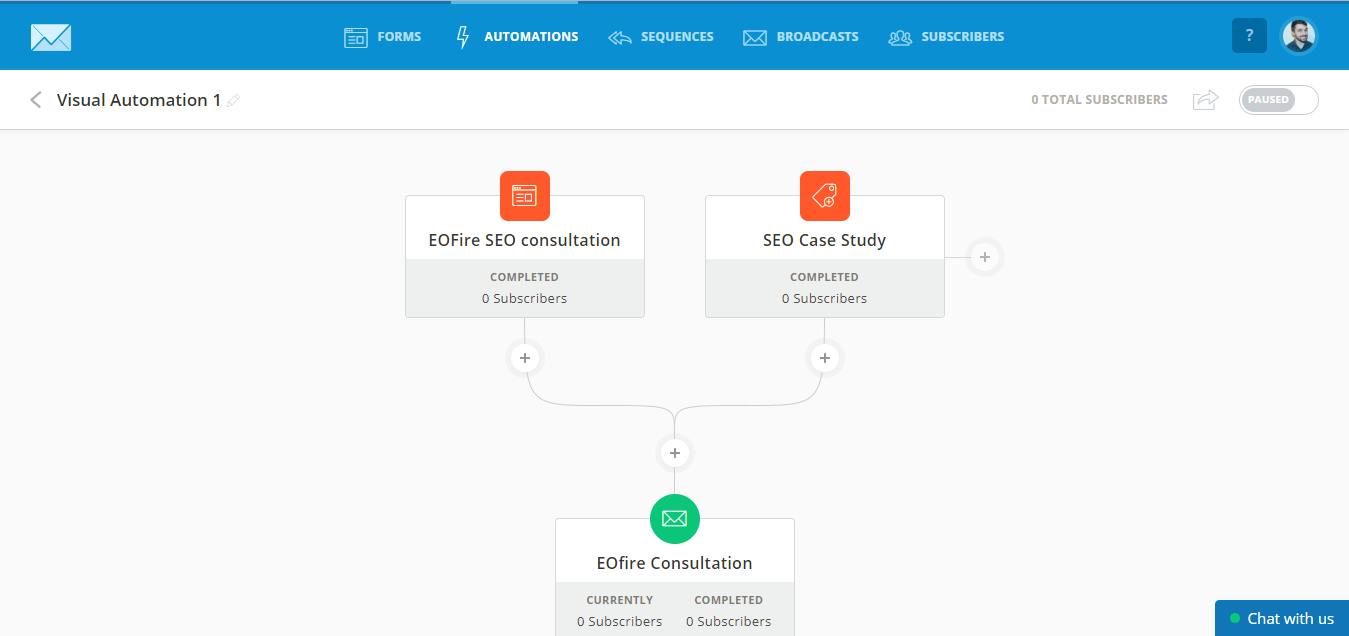
However, some other popular tools include:
-
MailChimp
-
Klaviyo
-
GetResponse
-
ActiveCampaign
-
Drip
The most important features to look for in an email marketing platform are segmentation, personalization, and reporting.
These three things allow you to automate and scale your email marketing campaigns with the least amount of struggle possible.
Klaviyo would be my second choice, especially for online stores — they specialize in ecommerce, whereas the others are more general for anyone.
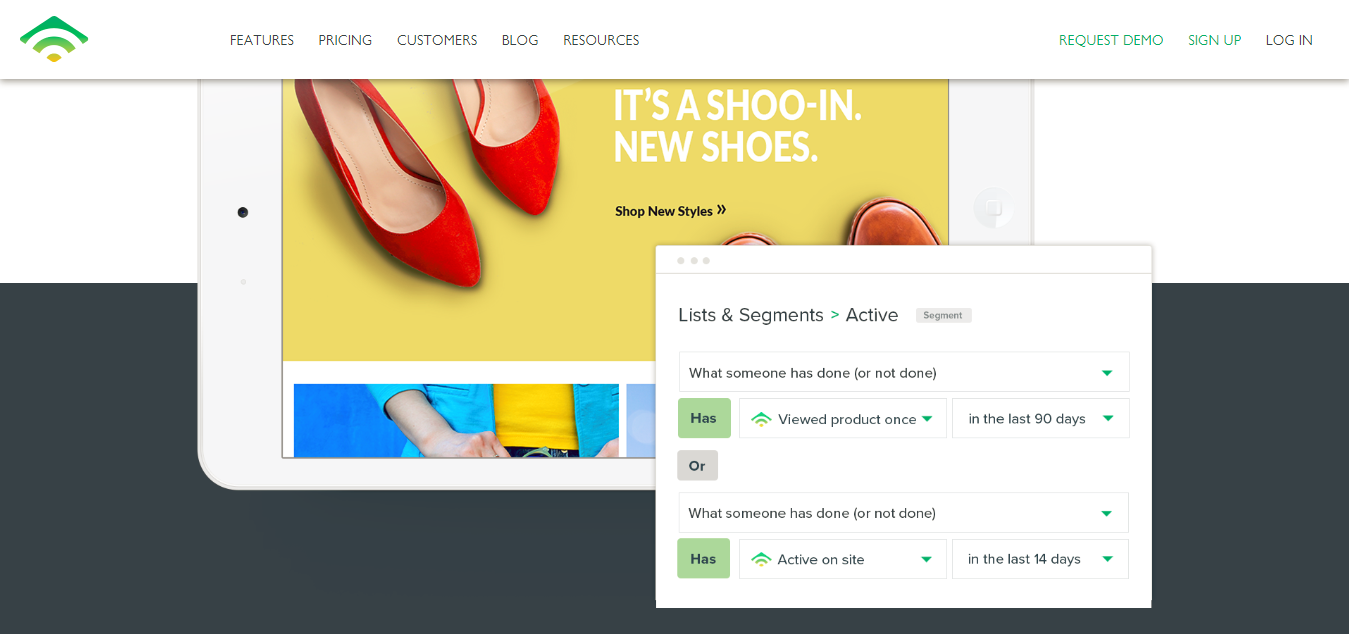
Once you’ve decided on your provider, move onto your social media!
Social Media Marketing Automation Tools & Systems
Social media is another big driver of sales for most ecommerce stores. According to the same study from above, social media marketing drives 44% of customer retention, and 51% of customer acquisition.
Unfortunately, social media can be a HUGE time sink, often with little to no results. Again, automation is your savior!
Some of the best tools for automating your social media marketing include:
-
Buffer
-
MeetEdgar
-
HootSuite
-
Sprout Social
-
Agorapulse
The main features when deciding on which automation platform to use are post scheduling, social monitoring, reporting, and management.
If you’re only concerned with post scheduling and reporting, Buffer is very affordable and easy to use, whereas Meet Edgar is really advanced with smart algorithms to ensure your best content is re-shared automatically.
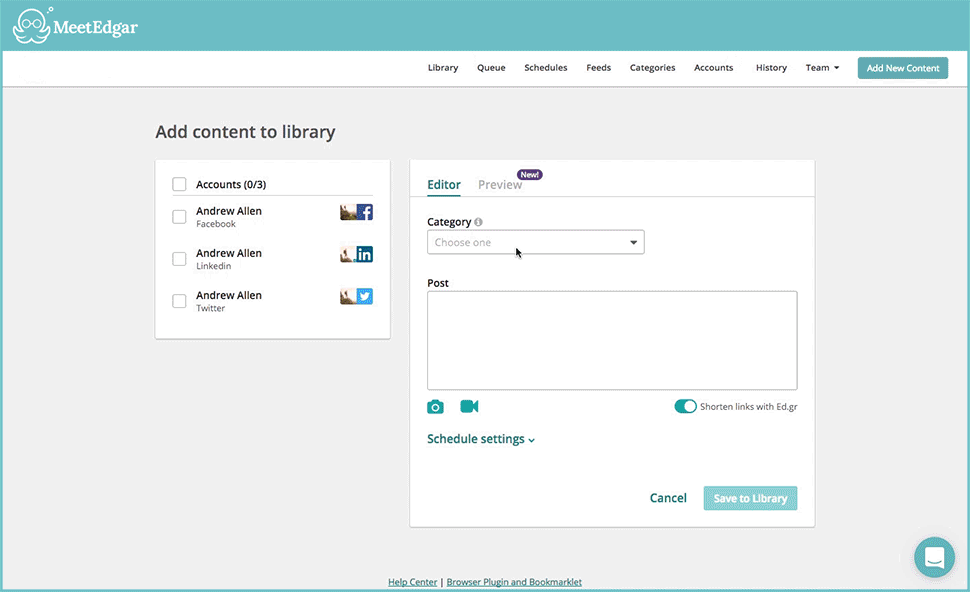
But if you want a full automation experience — being able to monitor your competitors and reply to messages and comments from one login — then you’ll want a more complete platform like Sprout Social or Agorapulse.
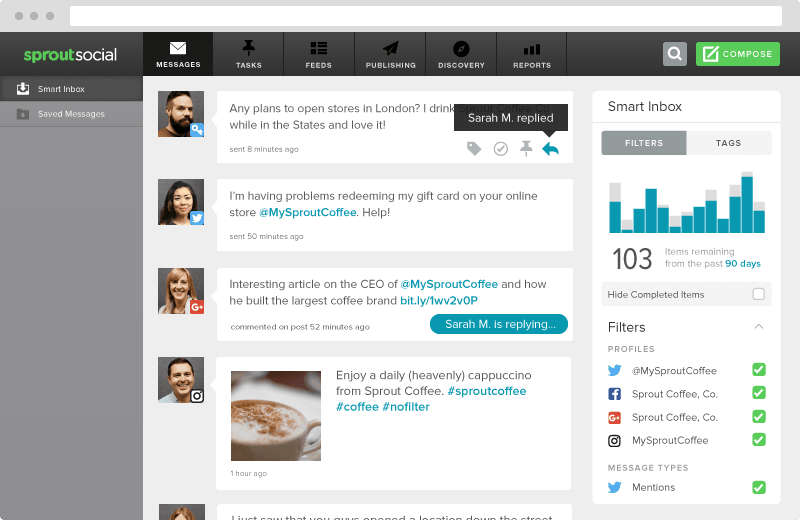
The software you choose really depends on your needs. Just pick one with the features you need at a price you can afford, then move on to the next section!
Email Marketing Automation How-Tos
Alright, now you should have a platform to automate your emails (if you didn’t already). The question is: What’s the best way to use it?
Since I use ConvertKit, I’ll be showing you examples with that tool. However, most of these strategies can be used with nearly any email marketing software, so don’t feel like you need to go with ConvertKit.
Now let’s talk about lead nurturing campaigns.
A lead nurturing campaign is a simple series of emails you send to your list (aka your “leads”) in order to “nurture” them into a customer.
For example, an ecommerce lead nurturing email sequence might be triggered when someone signs up for an instant discount popup on your site, like this:[*]

A subscriber on this list might get an email sequence like this:
-
A welcome email with their discount, some cool info about the company, and what they should expect in terms of emails. Possibly also some products they might like based on which items they viewed in store (personalization).
-
Two or three emails with educational content from your blog. Think “How to” or “Tips” type articles, such as “How to soften your beard” or “5 tips for a softer beard”. (I have a beard, so that’s what came to mind!)
-
A “getting to know you” type email, where you send a quiz, form, or ask for a direct response. This will help you personalize future emails.
-
An additional sale or new product release email, hopefully based off their answers to the previous email.
All the emails in that sequence can easily be automated ahead of time. In fact, you can automate up to a year or more after someone hits your list!
First, you need a popup or some way for people to subscribe. Don’t have a popup to capture leads and start the sequence? Try Sumo’s Grow Email List Shortcut for free by clicking on the button below.
Next, you need to set up your sequences. Here’s a quick five-minute how-to video with some pointers:
Not sure what to send in your lead nurture sequence? Check out this swipe file of three ecommerce email marketing automation drips you can use to automate your sales.
Once that’s setup, it’s time to get into some automations to further segment and personalize your list. This is important — in one study, 54% of marketers reported seeing a greater than 10% improvement or "lift" from personalization, with 13% of those seeing improvements of 30% or more![*]
Watch this quick video on how to set up automations:
Here are some guides to set this up based on your email marketing tool:
If you’re not sure what automations to set up, here are a few to try:
-
Recommended or related products emails whenever someone clicks a product link. (Just limit to one email so they don’t get 10 emails from clicking on multiple products!)
-
Discounts on viewed products whenever someone clicks a product link and doesn’t buy.
-
Personalized blog content related to the product or blog posts a person visit. If someone clicked the link to my “How to get a softer beard” article, I might trigger an automation to send them more beard care blog posts. Or if they don’t click on that article, but click on the next one with “5 daily face cleansing tips to keep your skin smooth”, then I would stop sending the beard-related articles, and only send skincare-related articles.
You get the idea. Feel free to experiment!
I also recommend setting up your email sequence to be as long as possible — at least one or two months — so you don’t have to worry about sending emails every week to keep your list engaged. It’s a lot of work upfront, but saves you countless hours over time.
Beyond lead nurture campaigns, you should also set up high-quality transactional emails. For example, you can add upsells or referral marketing to your order confirmation emails, or create unique and fun abandoned cart emails.
Next up, let’s talk social media!
Social Media Marketing Automation How-Tos
Social media can be a great way to make sales and engage your audience — but the very nature of it is to consume time.
It’s easy to go on just to “post an update”, then spend an hour or two scrolling through your feed and responding to notifications.
To avoid that time sink and still get the benefits of more sales, automation can help. Here’s what I do:
If you use Buffer or another simple scheduling software, simply fill your feed with good content. Look at the analytics section inside your social media tool to find your most engaging content. This could be the most retweets, most comments, most clicks, etc.
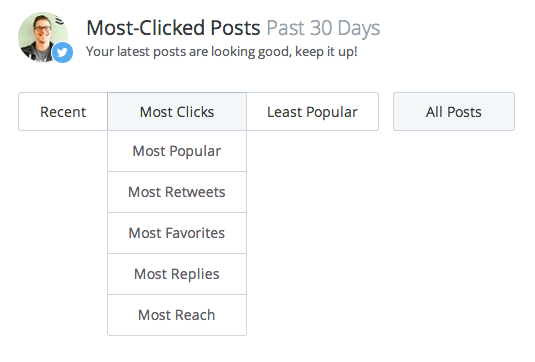
Then, post more of your best stuff!
To further optimize things, look at the time of day, and day of the week that’s most engaging for your content. Here are some of the best times to post based on social platform, but keep in mind that your unique audience may be completely different:[*]
-
Twitter: All Day Tuesdays, 11AM to 12PM Wednesdays
-
Facebook: All Day Wednesdays, 9-10AM Tuesdays
-
Instagram: Sundays 3-4AM, All Day Tuesdays, and 10-11PM Wednesdays
To keep your post scheduling efficient, I recommend sitting down once a week or once a month to schedule everything in one batch.
My friend and fellow marketer Aaron Orendorff recommends:
-
Creating long-form, epic content on your blog.
-
Picking out the key points from the article.
-
Creating a social post for each key point to promote the article.
For example, after publishing my white hat SEO article, I created 13 separate LinkedIn posts, each one maximizing their 1,300 character limit with a unique key takeaway.
Pro tip: Running out of posting ideas? Try signing up for Quuu to get hand-picked, high-quality content to share on your social accounts.
One last tip before you go…
Beyond scheduling posts and managing your accounts, you can also create automated chatbots to market your store and answer common questions. They’re taking the world by storm, and people seem to be loving them (if they’re done right).
What Have We Learned?
Ecommerce marketing automation can save you dozens of hours while simultaneously helping you scale your online store.
Just because you’re automating things, doesn’t mean you’re taking the personal, human touch away. In fact, automations can make things more personalized than you otherwise could.
Now go set up your next month of emails and social posts. To help you, we’ve put together a swipe file of three email automations you can use in your business:
-
Abandoned cart email automation
-
Welcome email automation
-
Email nurture automation
Click the button below to get access to all three.
Ecommerce Marketing Automation Swipe File
Related Articles
%(relatedarticles)
Add A Comment
VIEW THE COMMENTS